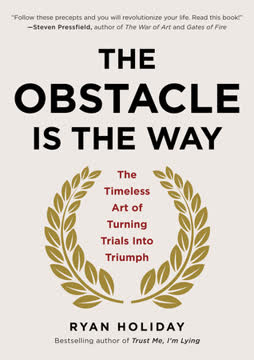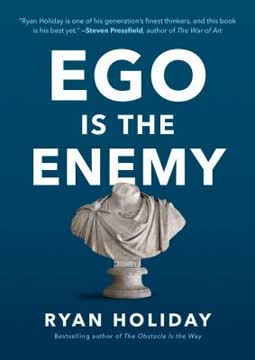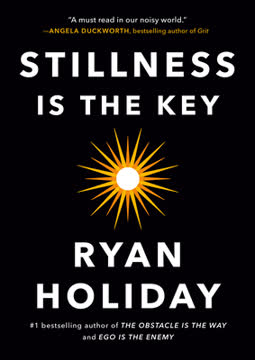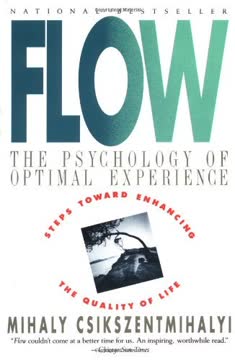Key Takeaways
1. Brand storytelling is essential for creating lasting customer connections
"Brands as stories help reinforce our own self-images too."
Brand stories create meaning. Unlike traditional marketing that focuses solely on product features and benefits, brand storytelling creates an emotional connection with customers. This approach taps into the power of narrative to engage audiences on a deeper level, making the brand more memorable and relatable.
Stories resonate universally. Humans are hardwired to respond to stories, as they've been used for millennia to convey important information and values. By framing a brand as a story, marketers can leverage this innate human tendency to create stronger, more lasting connections with their audience.
Self-identification drives loyalty. When customers see themselves reflected in a brand's story, they're more likely to develop a sense of loyalty and advocacy. This self-identification goes beyond mere product satisfaction, creating a relationship based on shared values and beliefs.
2. The StoryBranding process aligns brand values with customer beliefs
"StoryBranding is a process designed to help us know brands the way stories help us know ourselves."
Six Cs of StoryBranding:
- Collect the Backstory
- Characterize the Brand
- Characterize the Prospect
- Connect the Characters
- Confront the Obstacles
- Complete the StoryBrief
Brand-first approach. Unlike traditional marketing that starts with customer needs, StoryBranding begins by defining the brand's core values and beliefs. This ensures authenticity and provides a strong foundation for building meaningful customer relationships.
Matching process. The StoryBranding approach seeks to align the brand's inner and outer layers with those of the target audience. This alignment creates a natural affinity between the brand and its customers, fostering stronger connections and brand loyalty.
3. A brand's inner layer (values) and outer layer (features) must be congruent
"Hypocrisy can kill a brand. Brands must shield themselves from falsity at all costs."
Inner layer defines purpose. A brand's inner layer consists of its core values, beliefs, and motivations. This is the "why" behind the brand's existence and actions, providing depth and meaning beyond mere product features.
Outer layer demonstrates values. The outer layer comprises the tangible aspects of a brand, including products, services, and customer interactions. To build trust and credibility, these elements must consistently reflect and reinforce the brand's inner layer values.
Consistency builds trust. When a brand's actions (outer layer) consistently align with its stated values (inner layer), it creates a sense of authenticity and reliability. This congruence is essential for building long-term customer relationships and brand loyalty.
4. Effective brand stories resonate with existing customer beliefs
"The best stories don't teach people anything new. Instead, the best stories agree with what the audience already believes and makes the members of the audience feel smart and secure when reminded how right they were in the first place."
Reinforce, don't change. Successful brand stories don't attempt to radically alter customer beliefs. Instead, they tap into existing values and perspectives, reinforcing and clarifying them in a way that feels natural and authentic.
Authenticity over manipulation. Rather than trying to manufacture a brand image based solely on market research, effective storytelling requires brands to identify and express their genuine core values. This authenticity resonates more strongly with customers than contrived messaging.
Examples of brand alignment:
- Old Spice: Modernized its masculine identity without changing core values
- Volkswagen Beetle: Reconnected with its counter-culture roots
- Apple: Consistently reinforces "Think Different" mentality across products
5. Brand archetypes help define and communicate brand identity
"Archetypal analysis is a diagnostic tool for the purpose of aiding judgment. It is not an exact science and does not purport to be."
12 common brand archetypes:
- The Hero
- The Outlaw
- The Magician
- The Regular Guy/Gal
- The Lover
- The Caregiver
- The Ruler
- The Creator
- The Innocent
- The Sage
- The Explorer
- The Jester
Simplify brand personality. Archetypes provide a framework for understanding and communicating a brand's core identity. By associating with familiar character types, brands can more easily convey their values and personality to customers.
Guide brand behavior. Once a brand archetype is established, it serves as a guide for consistent messaging and actions across all touchpoints. This consistency helps reinforce the brand's identity and strengthens customer connections.
6. Obstacles in brand storytelling mirror the hero's journey in traditional narratives
"Brands, too, must deal with obstacles both physical and psychological on their way to achieve the goal of affiliation with the prospect."
Four levels of brand-customer connection:
- Product Function Awareness
- Product Superiority Comprehension
- Brand Association
- Brand Affiliation
Progressive relationship building. Like a hero in a story, a brand must overcome obstacles to reach its ultimate goal of customer affiliation. Each level represents a deepening of the brand-customer relationship, with unique challenges to overcome.
Affiliation as the ultimate goal. Reaching Level 4 (Brand Affiliation) creates the strongest, most enduring customer relationships. At this level, customers identify with the brand's values and become brand advocates, providing a significant competitive advantage.
7. The StoryBrief synthesizes brand strategy into a cohesive narrative
"The StoryBrief, similar to the traditional creative brief, provides a summary of strategic thought and sets up the expectations for the brand's messaging."
Key components of the StoryBrief:
- Backstory
- Brand's inner and outer layers
- Prospect's inner and outer layers
- Communication obstacles
- Unique Value Proposition (UVP)
I AM statements. The StoryBrief includes first-person narratives for both the brand and the prospect, helping to create empathy and deeper understanding of both perspectives.
UVP as story essence. The Unique Value Proposition distills the brand's core belief or value into a simple, powerful statement. This serves as the foundation for all brand communications and helps guide decision-making across the organization.
8. Authenticity is crucial for building trust and brand loyalty
"Brands must shield themselves from falsity at all cost."
Actions speak louder than words. Customers are increasingly skeptical of advertising claims. Brands must demonstrate their values through consistent actions and behaviors rather than relying solely on promotional messages.
Transparency builds credibility. In the age of social media and instant information sharing, brands must be open and honest about their practices. Attempting to hide or misrepresent information can quickly erode trust and damage the brand's reputation.
Long-term perspective. Building authentic brand relationships requires a commitment to consistently living up to stated values over time. Short-term gains at the expense of authenticity can have lasting negative consequences.
9. Big-T Truths evoke emotional responses, while small-t truths provide facts
"Whereas small-t truths are explicitly stated, Big-T Truths come from within us."
Small-t truths:
- Objective, provable facts
- Product features and specifications
- Explicit claims and statements
Big-T Truths:
- Emotional, subjective interpretations
- Brand values and beliefs
- Implied meanings and associations
Balance for effective communication. While small-t truths provide necessary information, Big-T Truths create deeper connections with customers. Successful brand storytelling combines both elements to create a compelling and authentic narrative.
10. Personal branding benefits from storytelling principles
"If you have a birth certificate, you are a brand."
Apply StoryBranding to yourself:
- Identify your inner layer (values and beliefs)
- Align your outer layer (actions and achievements)
- Craft a personal narrative that resonates with your audience
Show, don't tell. Instead of listing accomplishments, demonstrate your values through stories and examples. This approach creates a more engaging and memorable personal brand.
Authenticity in personal branding. Like corporate brands, personal brands must be genuine and consistent. Trying to present an inauthentic image will ultimately undermine your credibility and effectiveness.
Last updated:
FAQ
What's "StoryBranding: Creating Standout Brands Through the Power of Story" about?
- Purpose of the book: "StoryBranding" by Jim Signorelli explores how brands can leverage the power of storytelling to create strong, emotional connections with their audience.
- Core concept: The book introduces the StoryBranding process, which helps brands define their unique value proposition and communicate it effectively through storytelling.
- Structure: It is divided into parts that cover the birth of the StoryBranding notion, the process itself, and how to tell the brand story, along with essays on StoryBranding.
Why should I read "StoryBranding: Creating Standout Brands Through the Power of Story"?
- Practical guidance: The book offers a step-by-step process for using storytelling to enhance brand communication and engagement.
- Expert insights: It includes insights from industry experts and real-world examples of successful brand storytelling.
- Emotional connection: It emphasizes the importance of creating emotional connections with consumers, which can lead to brand loyalty and advocacy.
What are the key takeaways of "StoryBranding: Creating Standout Brands Through the Power of Story"?
- Brand as a story: Brands should be seen as stories with well-developed characters, plots, and themes to resonate with audiences.
- Inner and outer layers: The book discusses the importance of understanding both the inner (values and beliefs) and outer (features and benefits) layers of a brand.
- Six Cs of StoryBranding: The process involves collecting the backstory, characterizing the brand and prospect, connecting characters, confronting obstacles, and completing the StoryBrief.
How does the StoryBranding process work?
- Six steps: The process includes collecting the backstory, characterizing the brand, characterizing the prospect, connecting the characters, confronting obstacles, and completing the StoryBrief.
- Character focus: It emphasizes understanding the brand and prospect as characters with inner and outer layers.
- Goal: The ultimate goal is to create a strong, enduring relationship between the brand and its audience.
What is the difference between StoryBranding and storytelling?
- StoryBranding as strategy: StoryBranding is a strategic process that uses story structure to enhance brand communication.
- Storytelling as tactic: Storytelling is a creative technique used to convey messages, but it is not always practical in all media.
- Focus on planning: StoryBranding focuses on planning the brand's identity and message before execution.
What are the best quotes from "StoryBranding" and what do they mean?
- "Stories clothe truths by not getting in the way of truth." This quote emphasizes the power of stories to convey truths in a way that resonates with audiences without being overt.
- "The best advertising tells the truth." This suggests that authenticity and honesty in brand messaging are crucial for building trust with consumers.
- "A brand is a metaphorical story that connects with something very deep." This highlights the importance of brands connecting with fundamental human values and beliefs.
How can brands benefit from using archetypes in StoryBranding?
- Understanding motivations: Archetypes help brands articulate their inner layer by identifying universal behavioral patterns.
- Characterization: They provide a framework for characterizing the brand as a person, which aids in creating relatable and engaging brand stories.
- Flexibility: While archetypes offer guidance, they should not be rigidly applied; brands can blend archetypes to find their unique identity.
What role do "I AM" statements play in the StoryBranding process?
- Empathy building: "I AM" statements help marketers immerse themselves in the perspectives of both the brand and the prospect.
- Character development: They are written in the first person to create a deeper understanding of the characters' inner and outer layers.
- Creative inspiration: These statements inspire creative teams by providing a vivid, empathetic portrayal of the brand and its audience.
How does the book suggest brands handle obstacles in their storytelling journey?
- Identify obstacles: The book outlines four levels of obstacles that brands must overcome to strengthen their connection with prospects.
- Sequential approach: Brands should address obstacles in a sequential manner, from product awareness to brand affiliation.
- Long-term focus: The ultimate goal is to achieve a Level IV connection, where the brand becomes an integral part of the consumer's identity.
What is the significance of the Unique Value Proposition (UVP) in StoryBranding?
- Core belief: The UVP is a concise statement that encapsulates the brand's unique belief or value.
- Beyond features: Unlike the Unique Selling Proposition (USP), the UVP focuses on the brand's cause rather than its functional benefits.
- Emotional resonance: A well-defined UVP helps brands connect with consumers on an emotional level, fostering loyalty and advocacy.
How does "StoryBranding" address the challenge of authenticity in branding?
- Inner layer focus: The book emphasizes the importance of aligning the brand's inner layer (values and beliefs) with its outer layer (features and benefits).
- Consistency: Authenticity requires consistent demonstration of the brand's values across all touchpoints.
- Consumer perception: Brands must ensure that their perceived motivations align with consumer expectations to build trust.
What are some practical applications of StoryBranding for personal branding and sales?
- Personal storytelling: Individuals can use storytelling techniques to convey their personal brand and values in a compelling way.
- Sales approach: Sales professionals can apply StoryBranding principles to understand their prospects' stories and align their offerings with shared values.
- Relationship building: By focusing on shared beliefs and values, individuals can create stronger connections with their audience or clients.
Review Summary
StoryBranding 2.0 receives mixed reviews, with an average rating of 3.95 out of 5. Positive reviews praise its innovative approach to marketing through storytelling and its actionable strategies for brand development. Critics find it overly simplistic and lacking concrete examples. Some readers appreciate the book's insights into creating human-like brands that build affiliation, while others feel it could have been condensed. Overall, readers value the book's fresh perspective on marketing, despite some concerns about its organization and depth of content.
Similar Books
Download PDF
Download EPUB
.epub digital book format is ideal for reading ebooks on phones, tablets, and e-readers.









